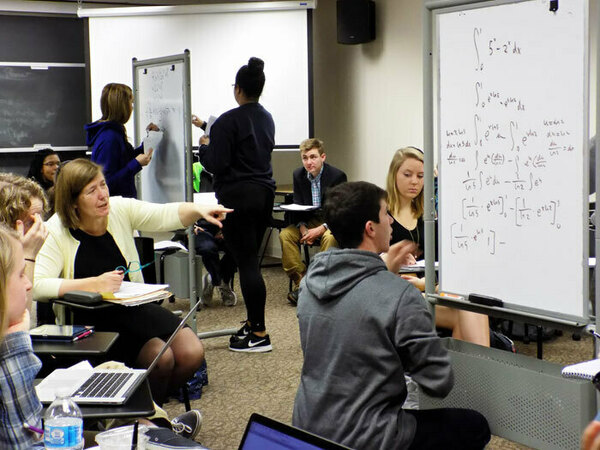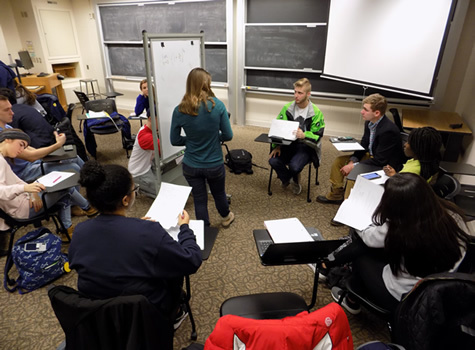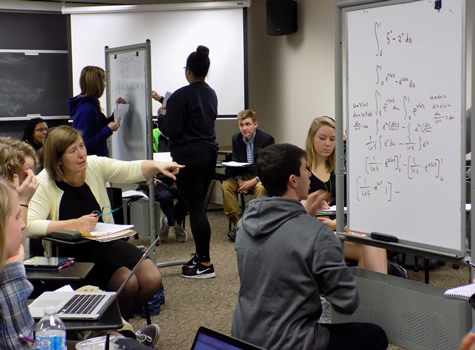

An experiment with flipped classrooms—video lecture viewing for homework and group problem-solving in class—in lower-level mathematics classes has heightened student engagement and learning. Enabled by new technologies, including a Lightboard that facilitates recording lectures, the strategy makes teachers’ expertise available to students when they need it most. Group work ensures positive peer pressure to complete before-class assignments, builds knowledge as they teach each other, and develops leadership.
Anne Bernadette Pilkington, an associate professional specialist in mathematics, organized the structure after she heard of the benefits of flipped classrooms. Graduate students Brian Stoyell-Mulhyolland and P.J. Jedlovec also use the method. Juniors and seniors work as teaching assistants and assist with the problem sessions. The approach has been used in Principles of Calculus, Principles of Finite Mathematics, Calculus 2, and Calculus 3. A Teaching Innovation Grant from the College of Science has helped support the work.

“It feels more like teaching to me than standing in a lecture hall pontificating,” Pilkington said. “I got to know the students much better. The idea was that students would work in a group and one would present at a whiteboard and work a problem. They could discuss it and argue about it. We would circulate and be able to answer questions as they arose instead of just standing there and lecturing.”
Stoyell-Mulholland, a fourth-year Ph.D. candidate who expects to focus on mathematics education in his career, has taught four classed with flipped classrooms and believes students typically pay more attention in the problem solving classes than lectures. “Besides the mathematics that developed, a side bonus I saw was student leadership,” he said. “They found that they were able to teach each other the material and look to me for verification and some directional support.”
Jedlovec, a fourth-year Ph.D. candidate who has been teaching for three years, said the method is especially appropriate for mathematics. “What is most helpful is to have an expert in the field there with you to help you solve problems, to do the really difficult part,” he said.

Mathematics Department Chair Jeffrey Diller said the initiative demonstrates the benefits of graduate students teaching undergraduates, not least because they have recent memory of what it was like to struggle with the material. “Graduate students bring to the classroom youth, energy, and openness to new things. They take it very seriously and have a lot of good ideas.”